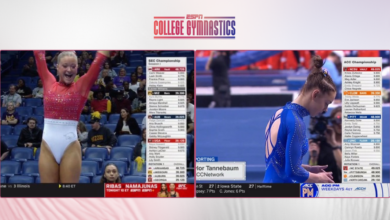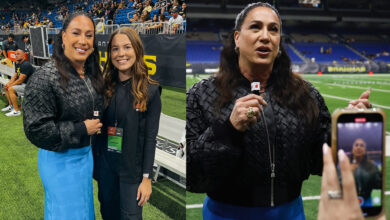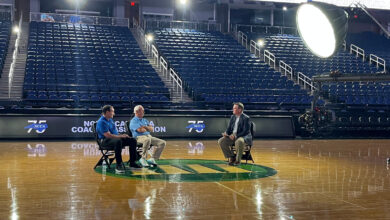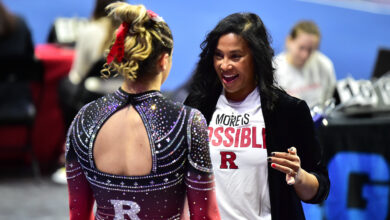ESPN Indy 500 promo takes viewers from 1911 vintage footage to present-day racing thrills
The latest Indy 500 promo (above) produced by ESPN Sports Marketing is a stirring 30-second trip through 100 years of thrills the iconic event has provided. The spot features vintage footage — supplied by IndyCar and Indianapolis Motor Speedway — dating back to 1911. The promo, which began airing last week, has inspired sports fans anticipating Sunday’s Indy 500 (ABC, pre-race coverage beginning at 11 a.m. ET, green flag at 12:15 p.m.).
“The campaign has been well-received by both internal stakeholders at ESPN as well as our league partners at IndyCar,” said Andrew Barge, associate manager, ESPN Sports Marketing. “In addition, the social conversation around the spot has been very positive.”
To wit:
EPIC #INDY500 commercial on @espn!!!! #TheGreatestSpectacleInRacing #9MoreDays!!!!
— Jeremy Minniear (@JeremyMinniear) May 17, 2013
Awesome #Indy500 promo that just ran on ESPN
— Tony D. (@TonyD1070) May 13, 2013
Yes it does. RT @martysmithespn: ESPN #Indy500 promo rocks -> youtube.com/watch?feature=…
— Bob Pockrass (@bobpockrass) May 13, 2013
Barge gave Front Row some background about the spot:
In 2012, the Indy 500 promo used singer/actor Jim Nabors’ rendition of the pre-race standard Back Home Again In Indiana as a theme. How did Marketing come up with “the greatest” theme for 2013?
This year, our marketing objective was to convey the Indianapolis 500 as “The Greatest Spectacle in Racing.” The campaign embraces the unique tradition, history, and thrilling on-track product to portray the event as part of the fabric of American culture. The Vault, the agency who developed the campaign, did a great job of bringing this goal to life.
What are some of the notable clips seen in the promo?
Our partners at IndyCar and IMS helped secure footage from the very first race in 1911, allowing us to convey the race’s history in an authentic way. We also featured some of the race’s most iconic, historical figures — [drivers] Rick Mears, Mario Andretti, Al Unser — and end the spot on two present-day drivers [three-time Indy 500 winners] Helio Castroneves and Dario Franchitti.
Please explain the colorization of some of the footage.
It was important to create a strong visual style that was distinct to the Indy 500. The Indy 500 has been part of the American life for long time, but continues to evolve in modern ways. The goal of the visual treatment was to showcase the class and timelessness of the sport in black and white, while hinting at its modern evolution in color.







